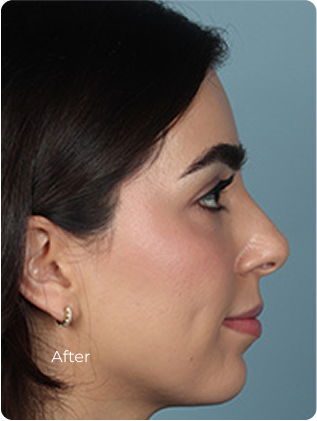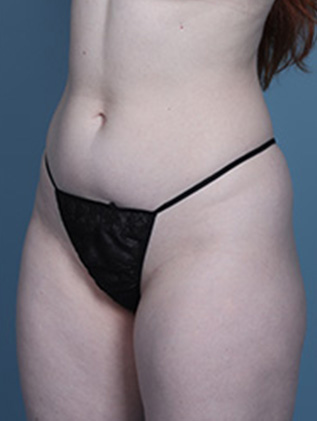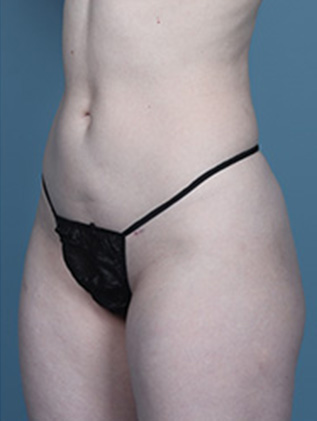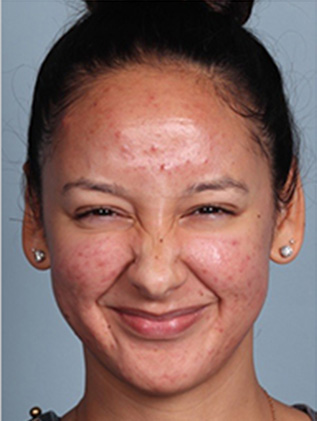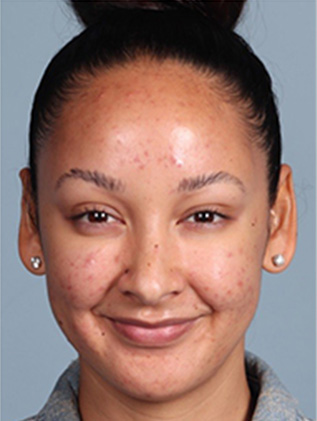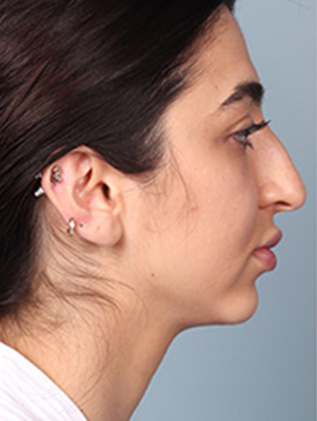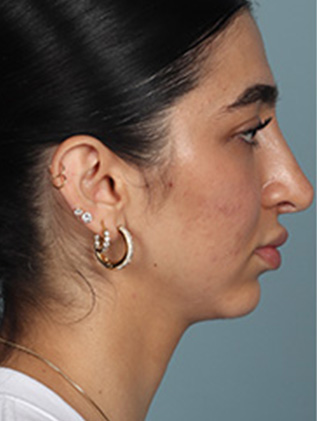By Dr. Luis Macias
A facelift is one of the most common cosmetic surgeries. It aims to rejuvenate the face by reducing wrinkles, sagging, and jowls. There are various types of facelifts. Each differs in the extent of intervention and the specific areas of the face or neck they target. The growing popularity of facelifts may stem from a psychological phenomenon. This occurs when the way we perceive age doesn’t align with how we feel internally.
Many individuals seek to look as youthful as they feel, and visible signs of aging, such as wrinkles and sagging, can negatively impact self-esteem. The desire for a more youthful appearance is a complex, deeply personal journey that varies from person to person. Interestingly, the ideal age for a facelift has shifted in recent years, with many opting for the procedure at a younger age than before. This raises the question: What is the ideal age for a facelift, and what factors influence this decision?
Aging and Facial Structure: How the Face Changes Over Time
Aging is influenced by a combination of genetics, lifestyle, and underlying health conditions. This makes it a unique and individual process for each person. There is no single timeline for how or when aging occurs. This is why it’s challenging to pinpoint an ideal age for a facelift that applies to everyone. Our face and neck are constantly exposed to environmental factors like sunlight. Even when our bodies are fully covered, the face and neck remain unprotected. This makes them more vulnerable to the signs of aging.
To better understand the aging process, it helps to divide the face into three distinct areas: the upper face (forehead to eyebrows), the mid-face (eyebrows to mouth), and the lower face (mouth to chin).
Upper Face (Forehead to Eyebrows)
In early adulthood, this part of the face is often defined by a strong hairline, a smooth forehead, and youthful, well-defined upper eyelids. However, as we age, the hairline typically recedes, and horizontal wrinkles begin to form across the forehead. Over time, the brow and forehead start to droop, contributing to a heavier, tired appearance in the upper eyelids. These changes give the entire upper face a more aged and less vibrant look.
Mid-Face (Eyebrows to Mouth)
The middle section of the face, once characterized by high, full cheekbones and smooth, firm skin around the lower eyelids, begins to lose its youthful plumpness. Puffiness and bags develop under the eyes, while fine lines and wrinkles start to appear. As the facial fat diminishes and the skin loses its natural volume, the cheekbones become less defined, leading to a more hollow appearance. One of the most noticeable changes is the downward shift of the cheekbones, leading to deepening nasolabial folds (the creases between the nose and mouth). This sagging gives the face a more hollowed and tired look, reducing the natural contour and balance of the mid-face.
Lower Face (Mouth to Chin)
The most pronounced signs of aging often occur in the lower third of the face. In youth, this area is defined by full lips, a sharp jawline, and a smooth, tight neck. Over time, the lips are thin, and vertical wrinkles (often referred to as “smoker’s lines”) form around the mouth. The once-sharp jawline becomes obscured by sagging skin, leading to the formation of jowls, while the neck loses its tightness and smoothness. This loss of definition can also be exacerbated by the redistribution of fat, which further contributes to the sagging and drooping of the lower face. The overall definition of the jawline diminishes as sagging tissues from the cheeks mask the underlying bone structure, resulting in an indistinct, aged appearance.
Of the three areas, changes in the lower face are often the most noticeable and commonly drive individuals to seek cosmetic procedures. Sagging jowls, a weakened jawline, and loose neck skin are some of the most prominent indicators of aging and areas of greatest concern.
While much of the aging process is genetically preprogrammed, lifestyle factors also play a significant role. Smoking, sun exposure, and diet can influence the rate at which these changes occur. Smoking accelerates skin aging by reducing collagen production. Excessive sun exposure causes damage that leads to premature wrinkles and sagging. Regular use of sunscreen and a skincare regimen that includes antioxidants and retinoids can help mitigate some of these effects. These habits can maintain skin health over time. Maintaining a balanced diet and protecting the skin from UV damage can help slow visible signs of aging. However, genetics and time ultimately play the largest role in how the face transforms over the years.
The Ideal Age for a Facelift: Pros and Cons of Early Intervention
The ideal age for a facelift is now considered to be younger than once believed. Rather than focusing on a specific number, the key is to look for early signs of aging, skin laxity, and the development of marionette lines. For many, these changes begin in the late 30s or early 40s, which is now seen as the perfect time to consider a facelift.
Undergoing a facelift at this stage offers several distinct advantages.
- Natural results: Since the signs of aging are less severe, the results tend to look more natural. A facelift at a younger age allows for subtle enhancements that help maintain a youthful appearance without making the surgery noticeable. This approach can involve a mini facelift combined with a temporal brow lift, which avoids long scars along the hairline and provides a more refreshed, youthful look.
- Long-lasting results: Because the skin and underlying tissues are still in relatively good condition, the results tend to last longer compared to individuals who wait until later in life.
- Less invasive procedure: Having a facelift in your late 30s or early 40s also means that the procedure may be less invasive. Skin laxity and sagging are minimal at this stage, requiring less extensive correction. In contrast, waiting until your 60s or beyond can lead to more dramatic changes in facial structure, making the surgery more obvious and the recovery more prolonged.
- Preventative measure: A facelift at a younger age can serve as a preventative measure, addressing mild signs of aging before they become more noticeable. By adjusting subtle changes early on, it helps maintain a youthful look and may reduce the need for more extensive procedures later. Younger patients also benefit from faster recovery due to more elastic skin.
- Correcting post-weight loss sagging: Another reason younger individuals may consider a facelift is significant weight loss. Rapid or dramatic weight loss can cause unexpected facial changes, as the skin may not contract fully, leading to sagging and a prematurely aged appearance. A facelift can address this excess skin, restoring a more youthful look. Additionally, most patients opt for fat grafting during facelifts to regain lost facial volume from both weight loss and aging.
Considerations for Younger Facelift Candidates
However, there are also considerations to keep in mind. While undergoing a facelift at the ideal age for a facelift may seem like a good solution, it’s important to remember that aging is a continuous process, and additional procedures may be needed in the future to maintain the desired results. While the surgery is less invasive, it’s still a significant procedure that requires recovery time, even if it’s shorter than that of older patients.
Facelift types: Which one do I need?
The facelift, a procedure that’s been around for nearly a century, has evolved significantly over the decades to become safer and more effective thanks to advancements in techniques and technology. Today, there are several types of facelifts designed to address different levels of facial and neck aging. The most common are the mini facelift, full facelift, and neck lift.
Most people begin to consider the ideal age for a facelift in their late 40s or early 50s (around ages 47 to 53), when signs of aging, such as jowls and loose neck skin, become more noticeable, often resembling the features of their parents. A facelift primarily targets these areas, addressing sagging jowls and neck skin.
For those with mild aging, the results of a facelift may appear subtle, and some may opt to wait until more pronounced signs of aging develop. However, smaller procedures like the “weekend facelift” or mini-lift offer minimal yet effective improvements for early signs of aging, such as mild howling or slight neck skin sagging. These less invasive options are ideal for those with early signs of aging or a genetic predisposition. On the other hand, a full facelift delivers more dramatic and comprehensive results.
Choosing the Right Facelift Procedure Based on Age and Skin Condition
The extent of the procedure is determined by the degree of skin laxity and the overall condition of the patient’s skin. The more advanced the aging, the more extensive the facelift needed. To determine the ideal age for a facelift and the best procedure for your needs, consulting with a qualified surgeon is essential. Rather than choosing a procedure based on personal preference, the surgeon will assess your needs. They will recommend the most effective approach.
It’s equally important to manage your expectations and have realistic goals. While it’s not feasible to aim for a teenage appearance, many patients can achieve a refreshed look, appearing up to ten years younger with a facelift. Setting healthy, attainable goals ensures greater satisfaction with the outcome and a more natural-looking result.
Will I Need a Revision Surgery?
Revision surgery after a facelift isn’t mandatory, as many patients are satisfied with the results of their primary procedure for years. On average, the effects of a facelift can last between 7 to 12 years. However, this varies depending on factors like genetics, lifestyle choices, and sun exposure. Maintaining a healthy lifestyle, using proper sun protection, and following a good skincare routine can help extend the longevity of facelift results. The growing popularity of facelifts has led more people to choose traditional and mini facelifts at younger ages. This has increased the demand for secondary facelift surgery.
However, as aging is a continuous process, some individuals may choose to undergo a secondary or revision facelift to refresh their appearance after the effects of the initial procedure begin to diminish. For those considering a revision facelift, there are two popular surgical options: the SMAS (Superficial Musculoaponeurotic System) facelift and the Deep Plane facelift.
SMAS Facelift
This approach focuses on tightening the underlying facial muscles and tissue, as well as repositioning the skin. It offers a natural, rejuvenated appearance while addressing sagging in the lower face and neck. A revision using this technique can further enhance the structure of your face by tightening the muscles and reducing excess skin, prolonging the youthful results.
Deep Plane Facelift
The deep plane facelift is a more advanced technique that lifts and repositions the deeper layers of facial tissue and muscles, rather than just tightening the skin. It provides longer-lasting and more dramatic results by addressing mid-face sagging, jowls, and deep nasolabial folds. This method is ideal for patients who want more significant improvements during a revision facelift.
Ultimately, whether you need or want revision surgery is a personal choice. Consulting with a skilled surgeon is essential. They can assess your individual needs and advise on the best options for maintaining or enhancing your results. A well-executed revision facelift can restore the natural contours of the face. It can also further enhance a youthful appearance without compromising subtlety and balance.
]To learn more about the innovative techniques and impressive results of deep plane facelifts, you can explore Dr. Macias’ Deep Plane Facelift Techniques and Results here. His expertise in performing deep plane facelifts highlights the importance of choosing a skilled surgeon for achieving optimal and natural-looking results, especially when considering revision surgeries.
Non-Surgical Alternatives to a Facelift
For individuals wanting to look young before aging becomes prominent but hesitant about surgery, there are non-surgical alternatives available. These options offer noticeable, though less dramatic, results. These procedures are generally less invasive and come with shorter recovery times. They are ideal for those in the early stages of aging or who prefer minimal downtime. Below are some of the most popular non-surgical facelift alternatives:
Microneedling with Radiofrequency
Microneedling with radiofrequency is a treatment that combines tiny needle punctures with radiofrequency energy to stimulate collagen production and tighten the skin. This procedure improves skin texture, reduces fine lines, and provides a mild lifting effect, particularly in the lower face and neck. Results are gradual and typically improve over several months. Multiple treatments are often recommended with effects lasting up to a year.
Dermal Fillers
Dermal fillers are injectable treatments used to restore lost facial volume, smooth out wrinkles, and enhance facial contours. Common ingredients include hyaluronic acid, calcium hydroxylapatite, or poly-L-lactic acid. These substances help plump the skin and reduce the appearance of sagging or hollow areas. Fillers are often used to treat nasolabial folds, marionette lines, and sunken cheeks. They offer immediate results with little to no downtime. The effects typically last between 6 months to 2 years, depending on the type of filler used.
Morpheus8
Morpheus8 is a SARD (subdermal adipose remodeling device) that sculpts and refines the face and body for a sleek, youthful appearance. Combining state-of-the-art radiofrequency technology with cutting-edge microneedling, Morpheus8 helps reverse skin laxity, wrinkles, and lines. By stimulating the regrowth of collagen and elastin, proteins responsible for the skin’s suppleness and hydration, Morpheus8 can create significant changes in the skin’s health, appearance, and contours, helping to restore your self-confidence.
Ignite RF
IgniteRF is a versatile body and facial treatment platform, featuring multiple synergistic technologies for soft tissue contraction, electrocoagulation, hemostasis, and fractional procedures. Reaching depths from 0.5mm to 60mm, it employs clinically proven bipolar radiofrequency (RF) energy for effective, natural results. Quantum 10, a key modality within IgniteRF, uses high-frequency energy to tighten skin, stimulate collagen, and reduce fat, offering non-invasive, customizable treatments. Both modalities ensure optimal outcomes with preset energy parameters and built-in monitoring mechanisms for precise, safe, and efficient treatment.
Frequently asked questions
How does the recovery process differ for younger vs. older facelift patients?
Younger patients often experience a faster recovery compared to older individuals due to better skin elasticity and overall health. However, recovery times can vary based on the extent of the procedure and individual healing responses. Regardless of age, following post-operative care instructions is crucial for achieving the best results.
How to Choose the Plastic Surgeon?
Choosing the right plastic surgeon is crucial for achieving the best possible results from your procedure. Begin by researching board-certified surgeons with proven experience in the specific procedure you are considering. Patient testimonials provide invaluable insight into the surgeon’s skill, bedside manner, and overall experience at their clinic. Make sure to check their credentials, visit their clinic, and assess their approach to safety and follow-up care. For comprehensive guidance on selecting the ideal plastic surgeon, refer back to our detailed guide on how to choose the right plastic surgeon.
Will a facelift address all signs of aging on my face?
A facelift primarily targets sagging skin, jowls, and deep wrinkles. While it provides significant improvements, it may not address all signs of aging, such as fine lines or volume loss. Combining a facelift with other treatments like dermal fillers, fat grafting or skin resurfacing may be recommended for more comprehensive rejuvenation.
How should I prepare for a facelift consultation?
Prepare for a facelift consultation by gathering information about your medical history, current medications, and any previous cosmetic procedures. Think about your aesthetic goals and be ready to discuss your expectations with the surgeon. Bringing photos of desired outcomes can also help communicate your vision effectively.
Final words
Determining the ideal age for a facelift is a personal decision influenced by genetics, lifestyle, and preferences. Many opt for facelifts in their late 30s or 40s to address early signs of aging. Others may choose to wait until more significant changes occur in their 50s or 60s. Regardless of age, modern facelift techniques, both surgical and non-surgical, offer a range of solutions to suit individual needs. Consulting with a qualified surgeon to evaluate your facial structure and skin condition is crucial for achieving natural, long-lasting results. Whether seeking subtle enhancements or dramatic rejuvenation, success lies in a tailored approach, realistic expectations, and a commitment to long-term skincare and maintenance.
You’re never too young for a facelift, as long as you have a clear understanding of what the procedure can achieve and are pursuing it for the right reasons.



